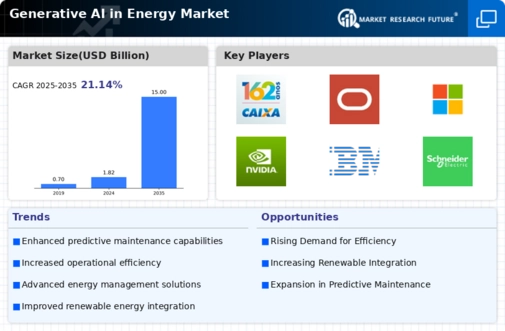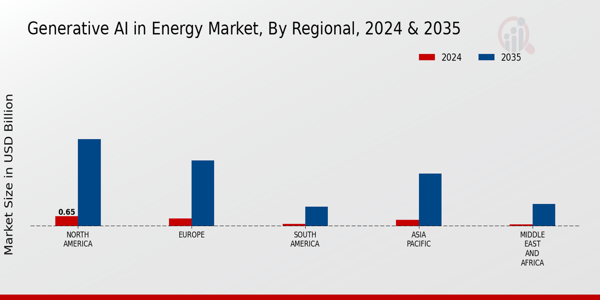Market Share
Generative AI in Energy Market Share Analysis
In the ever-evolving landscape of the energy market, Generative Artificial Intelligence (AI) is becoming increasingly instrumental in shaping strategies and operations. Generative AI, leveraging advanced algorithms and data, holds immense potential to optimize processes, enhance efficiency, and drive innovation across various sectors, including energy. In the pursuit of gaining market share, companies specializing in Generative AI are strategically positioning themselves to capitalize on emerging opportunities within the energy market.
One prevalent strategy involves offering tailored solutions that address specific pain points within the energy sector. These solutions encompass a wide array of applications, ranging from predictive maintenance of energy infrastructure to optimizing power generation and distribution. By understanding the unique challenges faced by energy companies, Generative AI providers can develop specialized tools and platforms designed to streamline operations and maximize output. This targeted approach not only demonstrates the value proposition of Generative AI but also fosters long-term partnerships with energy stakeholders.
Moreover, Generative AI companies are actively engaging in collaborative initiatives with established players in the energy industry. These partnerships facilitate the integration of AI-driven technologies into existing frameworks and infrastructure, ensuring seamless adoption and implementation. By aligning with key industry stakeholders, Generative AI providers can leverage their expertise to co-create innovative solutions that address evolving market needs. Such collaborations not only enhance market penetration but also establish credibility and trust within the energy sector.
Another crucial aspect of market share positioning involves continuous research and development to stay ahead of the curve. Generative AI companies invest heavily in refining algorithms, enhancing predictive capabilities, and expanding the scope of applications within the energy domain. By pushing the boundaries of innovation, these companies can offer cutting-edge solutions that deliver tangible benefits to energy companies, thereby solidifying their position in the market. Additionally, ongoing R&D efforts enable Generative AI providers to adapt to changing market dynamics and capitalize on emerging trends effectively.
Furthermore, an emphasis on scalability and customization plays a pivotal role in market share positioning strategies. Generative AI solutions must be scalable to accommodate the diverse needs of energy companies, ranging from small-scale operations to large-scale enterprises. Additionally, offering customizable features allows clients to tailor AI solutions according to their specific requirements, fostering greater adoption and satisfaction. By prioritizing flexibility and scalability, Generative AI providers can effectively cater to the varying demands of the energy market, thereby gaining a competitive edge over rivals.
In addition to technological prowess, effective marketing and branding strategies are essential for capturing market share in the energy sector. Generative AI companies leverage targeted marketing campaigns, industry events, and thought leadership initiatives to raise awareness about their offerings and establish thought leadership within the energy market. By positioning themselves as trusted advisors and innovators, these companies can attract the attention of potential clients and differentiate themselves from competitors. Moreover, building a strong brand identity instills confidence in clients and reinforces the perceived value of Generative AI solutions in driving operational excellence within the energy industry.















Leave a Comment